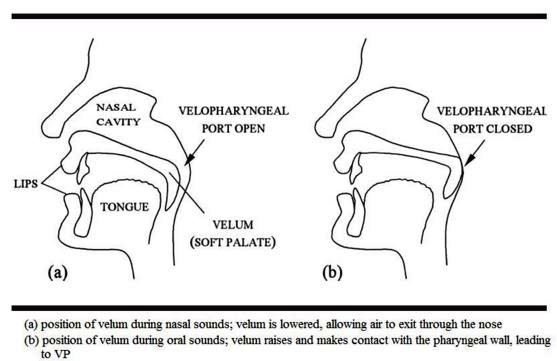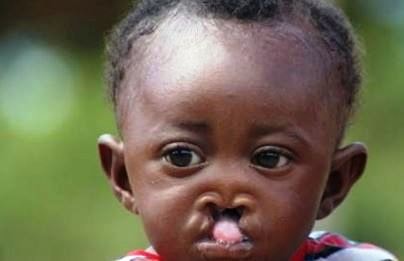Hypernasality
What is Hypernasality?
Speaking and swallowing are composite motor functions that need the coordination of a diverse grouping of muscles in the upper airway. Hypernasality which is also known as open nasality or hyperrhinolalia is a type of speech disorder usually noted when the tissues of the pharynx and palate do not close correctly and increasing the air to flow through the nose while speaking.

Image 1 – Physiology of oral and nasal sounds production
This disorder is usually present among children who had experienced a cleft palate surgery, adenoidectomy which rarely happens, in kids who have neurologic problems, in some craniofacial syndromes, and occasionally in healthy children. The speech of the child will somehow be impossible to understand and this could absolutely impair communication.
The consequences of this condition is never easy for it could greatly devastate a child’s quality of living, as studies proved that individuals with the disorder are mostly considered less pleasant, less intelligent, and less attractive compared to those with normal speech.
What are the Symptoms of Hypernasality?
A person with hypernasality will have a nasal voice and have certain
- difficulties in pronouncing some words such as the vowels and consonants,
- making it hard to communicate to other individuals.
- An impaired speech associated with language development is a common clinical symptom for this problem.
What Causes Hypernasality?
In some individuals, hypernasality is caused by neurological disorders. Children influenced with cerebral palsy and are suffering from cleft palate have greater chances of acquiring this condition.
Going into surgical treatment to treat a cleft palate will just double the chance of developing a hypernasal speech.

Another possible cause is when a child suffers from a hereditary condition called Down’s syndrome.
The chance of having the problem can also be increased if adenoidectomy had been performed on the child. Some children do not show any abnormalities but may still have open nasality. This may be caused by velopharyngeal mislearning, stipulating that the child has been mimicking, such as in cases of a faulty control in the utilization of palato-pharyngeal valving.
Diagnosis
The first step of diagnosing hypernasality is an analysis of the child’s speech by a speech therapist which also involves recording. In this condition, only the nasal sounds can be properly produced.
The neck and head will be checked and possibly perform a nasopharyngoscopic examination afterwards, which involves an inspection at the back of the throat while the child is talking in order to observe how the muscles of the throat work. Hearing tests may be ordered as well.
A mirror can also be held underneath the nose while the child utters some vowels. If dense moisture forms on the mirror, then it indicates the condition.
How is Hypernasality Treated?
There are a number of options to treat hypernasality. Ongoing speech therapy can be very essential to have a successful treatment. In most cases, speech therapy is enough to treat the condition. It involves the speech specialist working on the child regularly to correct the manner of speaking. In due course, experience and practice is all that is needed.
This might take months or a few years depending on the exact day that the condition was diagnosed and identified. Those kids who have a cleft palate may also suffer from hearing losses which means that children with cleft palate should also be tested for hearing abilities in order to find the right techniques to treat hypernasality.
In rare and severe cases, speech therapy alone may not be enough which will require more time to completely get rid of the child’s speech problems. In such cases, surgical treatment will be required to reduce the leakage of air from the nose and to facilitate the speech to sound normal. Dental prostheses can also help those children who are poor surgical candidates.
These devices prevent excess air to leak out from the nose during speech and are removable, but once the device is not used, the speech will again return to its original state of the same problem.
References:
- http://www.ayushveda.com/how-to-identify-and-treat-hypernasality/
- http://www.entcolumbia.org/hypernas.html
- http://www.rit.edu/ntid/speechlang/slpros/assessment/speechvoice/training/9
- Probst, Rudolf; Grevers, Gerhard; Iro, Heinrich; Telger, Terry (translator); Baum, Karin (illustrator) (2006). Basic Otorhinolaryngology a step-by-step learning guide (revised ed.). Stuttgart: Thieme. p. 401.
- Sloan, GM (February 2000). “Posterior pharyngeal flap and sphincter pharyngoplasty: the state of the art.”. The Cleft palate-craniofacial journal 37 (2): 112–22.
- Blakeley, R. W. (2000) Palate Dysfunction and Speech Disorders: Evaluation and Treatment Planning Program for Children and Adults. Austin, TX: Pro-Ed.
